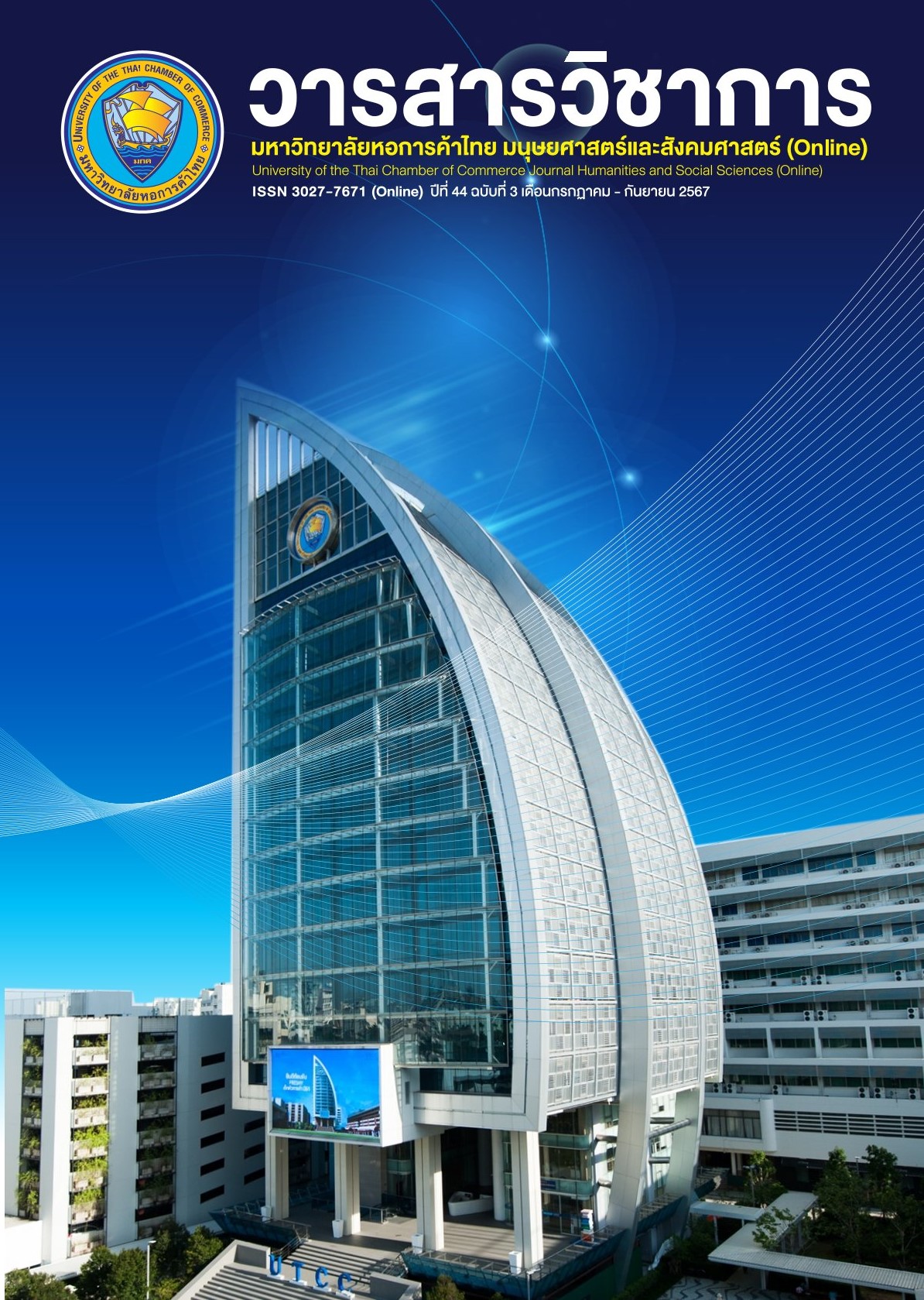Auspicious Symbols of Chinese Ceramics found from Archaeological Excavation in Northern Thailand
Main Article Content
Abstract
Chinese ceramics are important as archeological evidence. Normally, they have been found together with Lanna ceramics and ceramics from other countries. This article aims to study the patterns and symbols of Chinese ceramics found in northern Thailand from archeological excavation in the past century. It is found that the decorative patterns and symbols can be classified into seven groups. Auspicious symbols such as flaming pearls are often shown with the dragon, lingzhi (sacred fungus), or key fret. Chinese characters are normally shown at the bottom of ceramics or Chinese characters found in the king's seal. Nobility is found as a person symbol. Animal symbols include cranes, dragons, Qilin, horses galloping in the waves, and cats. Natural symbols include clouds and waves. Floral and botanical symbols include lotus, chrysanthemum, artemisia leaves, and floral scroll designs. Besides, special decorative symbols include Ju-I patterns, arabesque designs, and double Vajra tied with ribbons. The patterns and symbols of Chinese ceramics have influenced Lanna ceramics which then developed into unique designs.
Article Details

This work is licensed under a Creative Commons Attribution-NonCommercial-NoDerivatives 4.0 International License.
ลิขสิทธิ์ของบทความ
ผลงานที่ได้รับการตีพิมพ์ถือเป็นลิขสิทธิ์ของมหาวิทยาลัยหอการค้าไทย ห้ามมิให้นำเนื้อหา ทัศนะ หรือข้อคิดเห็นใด ๆ ของผลงานไปทำซ้ำ ดัดแปลง หรือเผยแพร่ ไม่ว่าทั้งหมดหรือบางส่วนโดยไม่ได้รับอนุญาตเป็นลายลักษณ์อักษรจากมหาวิทยาลัยหอการค้าไทยก่อน
References
Amaranonta, M. (1981). Stucco decoration on Chiangmai architecture under Mungrai dynasty [Master’ thesis]. Silpakorn University. https://sure.su.ac.th/xmlui/handle/123456789/1310src=%2Fxmlui%2Fdiscover%3Fquery%3DMarut%2BAmaranonta&offset=0&firstItem=true&lastItem=true [in Thai]
Chandavij, N. (1994). Chinese ceramics from archaeological sites in Thailand. Department of Fine Arts. [in Thai]
Department of Fine Arts, Chiang Mai. (2010). The report of the excavation at Wat Pan Sao, Suthep Subdistrict, Muang District, Chiang Mai. Department of Fine Arts. [in Thai]
-------. (2011). The excavation at Wat San krawan 3, Wiang Thakan. Department of Fine Arts. [in Thai]
-------. (2012a). The excavation of an ancient rampart at Ban Phraya Wat, Nan province. Department of Fine Arts. [in Thai]
-------. (2012b). The excavation of Wat Chang Nam, Chiangmai province. Department of Fine Arts. [in Thai]
-------. (2014). The excavation at Wat Som Suk in Mae Aye District, Chiang Mai province. Department of Fine Arts. [in Thai]
-------. (2019). The excavation in Muang Chiang Mai District, Chiang Mai province. Department of Fine Arts. [in Thai]
-------. (2021). The excavation at Wat Som Suk in Mae Aye District, Chiang Mai province. Department of Fine Arts. [in Thai]
Donavanik, B. (1986). Study on ancient city, Wiang Phra That Lampang Luang [Master’ thesis]. Silpakorn University. https://sure.su.ac.th/xmlui/handle/123456789/1269?attempt=2& [in Thai]
Leksukhum, S. (2007). Sino-Thai relations in ornamental motifs. Muangboran. [in Thai]
Meepukdee, K. (2021). Land use evolution of Khum Chao Burirat (Maha Intra), Chiangmai Province from archaeological evidence (Research Paper). Thammasat University, Lampang Campus. [in Thai]
Saenchit, K. (2009). Ancient Haripunjaya based on Archaeological evidence [Master’ thesis]. Silpakorn University. https://sure.su.ac.th/xmlui/handle/123456789/12756 [in Thai]
Sivasiriyanon, K. (1967). Sangkhalok: Sukhothai Sawankhalok [Master’ thesis]. Silpakorn University. https://sure.su.ac.th/xmlui/handle/123456789/1891 [in Thai]
Thansawangdumrong, K. (2005). The study of relationship between Muang Nan Sukhothai Lanna during the late 13th-16th A.D. evidences from Boh Sauk kiln site [Master’ thesis]. Silpakorn University. https://sure.su.ac.th/xmlui/handle/123456789/1332?src=%2Fxmlui%2Fdiscover%3Fquery%3DKamolthip%2BThansawangdumrong&offset=0&firstItem=true&lastItem=true [in Thai]
Thongthammachat, A. (2014). The origin and the development of Peony motif in Thai arts [Unpublished master’s independent study]. Silpakorn University. https://sure.su.ac.th/xmlui/handle/123456789/1619 [in Thai]


